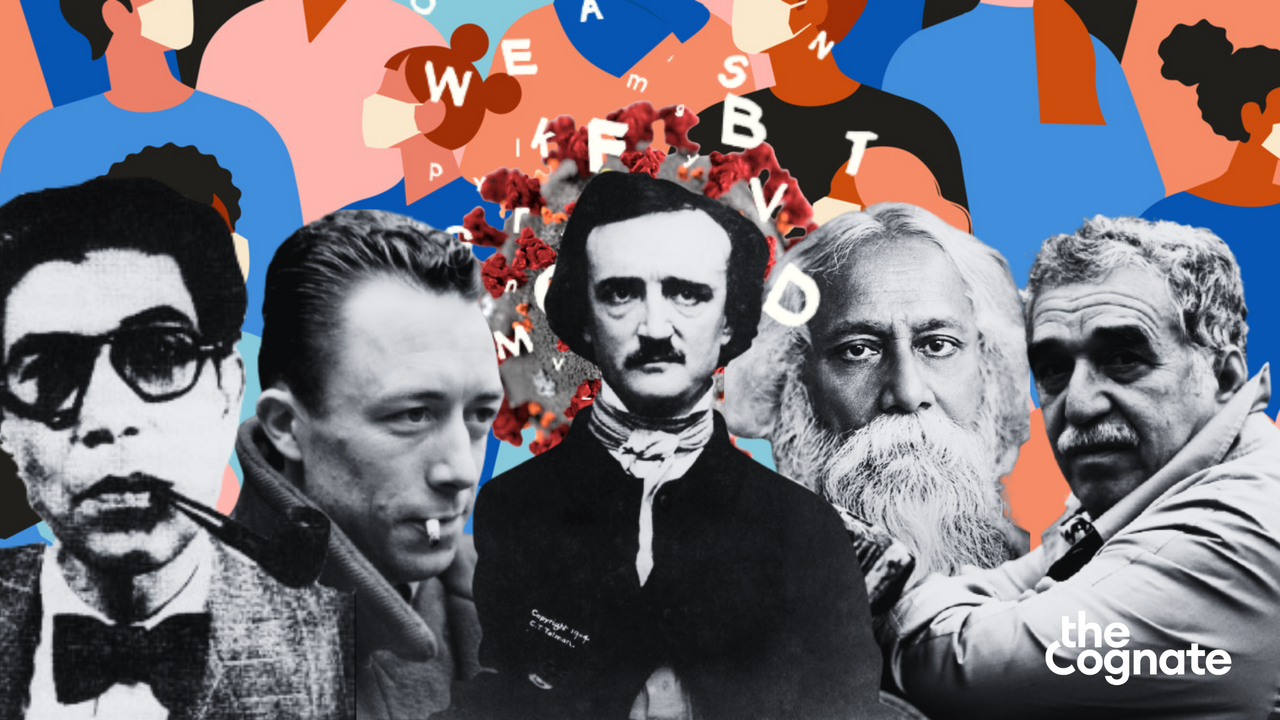We are living in an unprecedented time where the deadly pandemic has hit humanity with all its ferocity and frenzy and has wreaked havoc everywhere. In the wake of such a biological crisis where mental trauma and anxiety have swallowed the happiness of individuals, reading literature can be the medium of attaining meditation, comfort, and solace. It offers psychological counsel in the face of great suffering and provides powerful references from antiquity on how things can be made right again for the survival of human lives. More importantly, it makes us realize that we are not alone and overwhelms us with the sentiment of mutuality and collective solidarities.
Literature doesn’t only frame our responses towards apocalyptic situations but also investigates how pandemics have shaped politics, crushed the culture of dissent, and exacerbated countless inequalities in societies. Injustices fuelled by communalism, casteism, racism, sexism, ageism, jingoism, regionalism, and similar intersecting forms of oppression around the world. COVID-19 has intensified the problems of contemporary societies which possess fundamental existential as well as political questions about social life and compelled us to bridge the socio-economic divide and communal existence. In this dire need, literature on pandemics and plagues is the richest source of knowledge of humanity’s remarkable capacity to endure suffering and its ability to imagine and inspire future transformations. The sociological interpretation of diseases along with biological focuses through the literary lens provides a more comprehensive and intimate view.
Ranging from the classics to contemporary novels all literary works on pandemics resemble striking similarities between the current COVID-19 pandemic and the historical outbreaks of plagues across time. Denial, false information, vicious rumours, distrust of individuals belonging to other groups, and theories about a malicious intent behind the pandemic are some of the recurring human behaviour which become highly apparent when the ghost of an epidemic strikes. From Daniel Defoe’s ‘A Journal of the Plague Year’ (1772), Edgar Allan Poe’s short story ‘The Masque of the Red Death’ (1842), and Ahmad Ali’s Twilight in Delhi (1940) to Albert Camus’s ‘The Plague’ (1947) and Gabriel Garcia Marquez’s Love in the Time of Cholera (1985) are all based on the outbreaks of epidemics and reveals a trend depicting the commonality of human behaviour and their repercussions in society.

Throughout human and literary history what makes all the pandemics similar is the initial response of humans towards its outbreak; generally one of denial and delay. Furthermore, government handling of epidemics is largely accompanied by the manipulation of death numbers and distortions of facts. In the book ‘Journal of the Plague Year’ which is an extraordinary account of the devastation and human suffering inflicted on the city of London by the Great Plague of 1665, Daniel Defoe reports that in 1664 how civil authorities in London tried to make the number of plague deaths appear lower than it was by registering other, invented diseases as the recorded cause of death. Interestingly a similar observation could also be made in the case of India about the underreporting of death caused by COVID-19. Trust between government and the public is seen as essential to facilitating good governance but this claim has become a prominent contention during the coronavirus pandemic in India where the state imposed the harshest lockdown in the world without addressing the grievances of the marginalized population. Just as the poor bore the major burnt of the London epidemic in 1665 the migrant labourers and the poor are paying the heaviest price of the outbreak of the coronavirus in India.
Generally, all literary novels on pandemics particularly scathed on the topic of institutional responses to the plague. Edgar Allan Poe’s ‘The Masque of the Red Death’, published in 1842 illustrates the complete description of a mysterious epidemic where the monarch miserably fails to respond to the disease that afflicts the people. To escape death, Prince Prospero secludes himself and a thousand noblemen in a castellated abbey welds the gates closed and hosts a masked ball. The epidemic rages and kills the poor who were left outside to fend for themselves. It was toward the close of the fifth or sixth month of his seclusion that Prince Prospero and his friends celebrate within the sealed confines of the abbey, in a successful bid to avoid the contagion when suddenly the disease invades their sanctuary and kills everyone. This fictional tale illustrates the cautionary tale about humanity in a plague and explains the moral timidness of an incompetent executive who remains dauntless and sagacious and reflects upon the wages of inequity and denial which is all too familiar and mirrors the exact picture during COVID-19 in India.
Reading ‘The Plague’ in India, one of the worst coronavirus-afflicted countries in the world, one instinctively spots parallels trajectories of huge devastation in the cities of India and that of Camus’s Oran in Algeria. ‘The Plague’ brings out its acute and terrifying relevance in the present global crisis. It contains all the usual elements which we have witnessed in the outbreak of COVID-19: initial denial, unprepared leadership, vicious rumour and conspiracies. The novel tells us that “no one will ever be free so long as there are pestilences.” Here is a famous excerpt from the book.
“Everybody knows that pestilences have a way of recurring in the world; yet somehow we find it hard to believe in ones that crash down on our heads from a blue sky. There have been as many plagues as wars in history; yet always plagues and wars take people equally by surprise.”
Ahmad Ali’s novel, ‘Twilight in Delhi’, portrays a bleak and pathetic picture of the city elicited by the spread of the epidemic. “How deadly this fever is. Everyone is dying of it. The hospitals are gay and bright. But sorry is men’s plight”. Set against the background of the newly created capital of India, Delhi, and the rapidly changing socio-political environment, ‘Twilight in Delhi’ records the impact of the 1918 influenza, popularly known as Bombay Fever, in the life of old Delhi. This pandemic claimed over 50 million lives worldwide and about 10 to 20 million lives in India. The book seems the mirror image of today’s Delhi which witnessed an extreme shortage of hospital beds, oxygen, and lifesaving medicines, and the near-total collapse of the health system during the second wave of the pandemic in the month of April and May. There was no place for the living or the dead as hospitals and crematoriums ran out of space. Here is the famous excerpt from the book which unfolds the ritualistic dilemma and inhuman treatment of the dead bodies irrespective of religion and depicts the current situation in India.
“A new cemetery was made outside the city where people buried relations by the score. The Hindus were lucky that way. They just went to the bank of the sacred Jamuna, cremated the dead, and threw away without a shroud or cremation. They were mostly the poor. Yet in death it was immaterial whether you were naked or clothed or burnt or thrown away to be devoured by vultures and jackals.“
Pandemics hold a mirror in which polities and societies can see their true face. It exposes the carelessness, incompetence, and selfishness of those in power as the sole instigator of the fury of masses and reminds us that social hierarchies, racial differences, and wealth determine peoples’ ability to shield from the ravages of pandemics. The sufferings of the people who were the builders and helpers of society raise critical questions for our inner conscience: Where is our humanity in action?
In the midst of fear and isolation and entrenched socio-economic disparities, the literature of pandemics captures the frustration and hope of the ordinary masses. It compels us to look beyond the statistic of deaths and infection and cultivates the sense of social responsibilities which makes us feel that the world is not ours alone and we can’t avert our eyes from the truth. It allows us to examine what it means to be human, to voice, and to bring the people altogether and also teaches us how we can stand firm and face challenges posed by the raging pandemic.
Related
Aamir Raza is an Independent Researcher based out of New Delhi. He has an MA in Political Science from Jamia Millia Islamia.













































Pingback: COVID-19, State Repression And The Decline Of People’s Movement